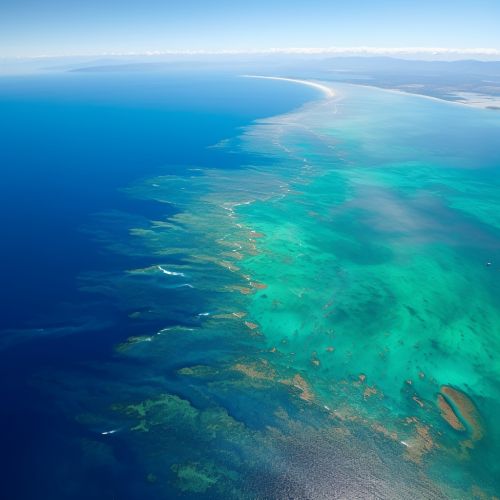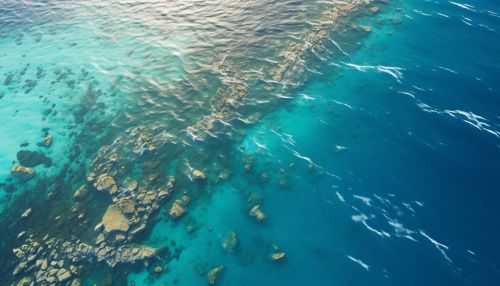Great Pacific Garbage Patch
Overview
The Great Pacific Garbage Patch (GPGP) is a significant accumulation of marine debris, predominantly plastic, located in the North Pacific Ocean. It is one of the most prominent examples of marine pollution, demonstrating the extensive impact of human activities on the global environment. The GPGP is not a solid mass or island of trash, but rather a region with a higher concentration of debris, much of which is microplastic particles suspended at or just below the water's surface.
Discovery and Location
The existence of the GPGP was predicted in a 1988 paper published by the National Oceanic and Atmospheric Administration (NOAA). This prediction was based on results obtained from monitoring stations across the North Pacific which consistently reported high concentrations of marine debris. The GPGP was first discovered and described in detail by oceanographer Charles J. Moore in 1997.


The GPGP is located roughly between 135°W to 155°W and 35°N to 42°N. It is situated in the western and eastern parts of the North Pacific Ocean, divided by the North Pacific Subtropical Convergence Zone. This zone, a natural boundary where warm water from the South Pacific meets cooler water from the Arctic, helps to trap the debris.
Size and Composition
Estimating the exact size of the GPGP is challenging due to its dynamic nature. It is influenced by ocean currents, wind, and sea conditions, causing its boundaries to shift. However, it is generally agreed that the GPGP covers an area of approximately 1.6 million square kilometers, nearly three times the size of France.
The composition of the GPGP is predominantly plastic, accounting for more than 90% of the total volume. This includes a wide range of items such as fishing nets, ropes, bottles, bags, and other consumer goods. A significant proportion of the debris is microplastics, tiny fragments less than 5mm in size, which are particularly harmful to marine life.
Impact on Marine Life
The GPGP poses a significant threat to marine biodiversity. Animals such as sea turtles, seals, and seabirds can become entangled in larger pieces of debris, leading to injury or death. Microplastics are often mistaken for food by marine organisms, causing physical harm and introducing toxic chemicals into the food chain. This can have far-reaching effects, impacting species not directly living in the GPGP, including humans who consume seafood.
Efforts to Address the Issue
Addressing the GPGP is a complex task due to its size, location, and the international nature of ocean pollution. Efforts include prevention, cleanup, and research. Prevention focuses on reducing plastic use and improving waste management. Cleanup initiatives, such as those led by the Ocean Cleanup project, aim to physically remove debris from the ocean. Research is crucial for understanding the extent of the problem and developing effective solutions.
